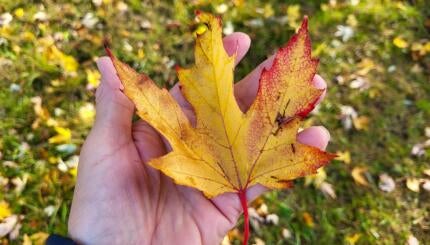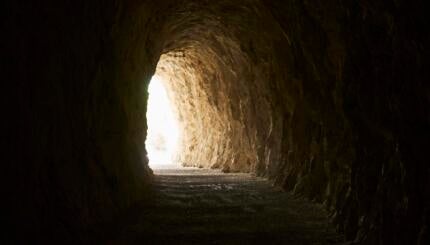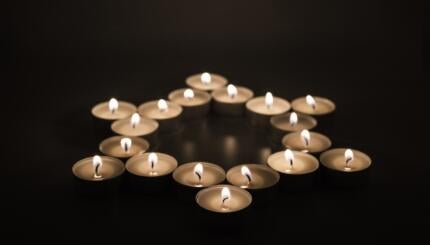Anthropologists tell us that initiation rites follow a common pattern. First, the candidate is prepared for the coming transformation. Next comes the test itself. And finally, the initiate returns to society, where their new status is recognized and celebrated in community.
How Judaism turns the wheel of the year follows this same pattern. As Rosh Hashanah and Yom Kippur approach, we prepare by blowing the shofar, a wake-up call alerting us that the great books of life and death are open before the Holy One. On Yom Kippur, we undertake the ordeal itself, fasting and restricting ourselves in a ritual rehearsal for death. It is a trial we hope to come through lightened, and maybe even a little enlightened, awash with a sense of forgiveness and the possibility of a fresh page in the book of life.
The final stage, acknowledging the space traversed and celebrating our survival, is Sukkot. By constructing a fragile booth, a distinctive semi-outdoor environment in which we gather for seven days, we literally create a container in which to integrate and affirm the initiation we have undergone.
The sukkah is a permeable structure, with a roof of leaves or stalks and walls that move in the wind. Simultaneously indoor and outdoor, stable and impermanent, private and public, it not only confounds our expectation of space, but seems to open a portal to somewhere slightly beyond time. In the sukkah we can receive visitation from the Ushpizin, sacred ancestors of the past, and also share a vision of a better future, for the sukkah is Judaism’s greatest messianic image. In the words of the prophet Amos, “the restoration of the sukkah of the beloved” (Amos 9:11) is our vision of a perfected world, and the righteous feasting within a great sukkah is how the rabbis of the Talmud picture paradise.
With your help, My Jewish Learning can provide endless opportunities for learning, connection and discovery.
Every evening our prayers ask God to “spread upon us the sukkah of your peace,” an image that anyone who has ever dwelt in the peacefulness of a sukkah can likely appreciate. The sukkah affords a rare feeling of containment and protection, paradoxically heightened by its very real vulnerability to what is beyond. Its fragility is a reminder of the exquisite and precious impermanence of life, and the critical interdependence of peace, shelter and survival. We grieve for those everywhere who because of war, social failings or unnatural disasters lack the shelter they need to preserve life and human dignity. We pray for the shelter of peace — for us and all our relations.
For perhaps the crux of the sukkah’s symbolism is its universalism. Adorned with boughs and fruit and flowers, the sukkah is a human reification of the natural world, a world that holds all of us beneath the same shining stars. Situated outside our homes and half open to the elements, the sukkah invites us to invite the stranger, the neighbor, the new friend to come sit with us.
Sukkot has always been the most universalist of Jewish holidays. This is a holiday so ancient the Torah and the Mishnah call it simply he’chag, “the holiday.” On Sukkot, we read the book of Ecclesiastes, a wisdom text contemplating universal human themes of time, work, impermanence and meaning. And it is on Sukkot that we recite Tefillat Geshem, praying for the rain that will nurture all life on earth. In ancient times, 70 bulls were offered in the Temple on Sukkot, understood by the Talmud as an offering on behalf of the 70 nations of the earth. Celebrating Sukkot thus evoked the prophetic vision of Isaiah that God’s house “will be called a house of prayer for all peoples.” Zechariah’s prophecy goes further, asserting that in the perfected future, the nations will not only make pilgrimage to perform these offerings, but will even create and dwell in their own sukkot.
The rites that we undertake each year — to usher in newness, to propitiate, to pray for a sealing into the book of life — are not undertaken only for ourselves, but on behalf of the collective. It is at this season that all beings, mortal and immortal, parade before the Holy One and the fates of nations hang in the balance. When we have survived that challenge and been sealed (we hope) for wellness and for wisdom, Judaism mandates that we celebrate with all the families of the earth, sheltering together in our frailty within a universal sukkah of peace. May we see these days come soon.
This article initially appeared in My Jewish Learning’s Shabbat newsletter Recharge on October 19, 2024. To sign up to receive Recharge each week in your inbox, click here.



